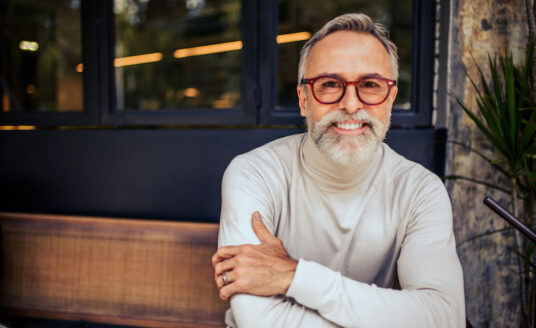After leaving the hospital following an illness or injury, most people want to immediately return to their normal routine. However, there is just one problem: their bodies may not be fully healed or completely capable of performing typical daily tasks yet. This is particularly true for senior adults. After a hospital stay, many seniors feel weak, stiff from lack of movement, and may still feel pain. While physical therapy and rehabilitation may be among the last things they want to do, it is often needed to recover as much function as possible.
Some of these services can be administered in the person’s home, but most physicians will recommend rehab at a skilled nursing community for safe, medically supervised rehab services.
The Bridge From Hospital to Rehabilitation Therapy
According to Michele Kimball, BSN R.N., Corporate Director of Clinical Services at Bethesda Health Group, rehabilitation in a skilled nursing community begins with a medical evaluation by nurses and physicians specializing in geriatric care. This evaluation includes an assessment of the senior’s medical condition and review of medications. The senior’s nutritional status is assessed by in-house registered dietitians in efforts to provide nutritional support to optimize overall health status and healing. The interdisciplinary team which includes physicians, nurses, therapy, registered dietitians, and social workers collaborate to develop an individualized plan of care to aid in returning the senior to the community at or as close to their prior level of functioning.
“All of these reviews and assessments tie into the overall health of the resident and their therapy plan,” Michele says. “Without considering the needs of the whole person, you’re not going to have the best results and risk re-hospitalization.”
Rehabilitation Services Make a Difference in Senior Healing
Many seniors are hesitant about rehabilitation therapy because they believe it is not as effective for those in their age group. The truth is no one is too old to benefit from physical therapy and rehabilitation. Physicians recommend it because it has proven to be an effective part of a person’s recovery.
For example, if a senior has been released from the hospital after a fall, statistics show they are more likely to fall again if they quickly resume normal activity. Therapy is necessary to strengthen the body and improve balance to help prevent this from happening.
Over time, joints and muscles stiffen and weaken. Mobility decreases while pain increases. Endurance, flexibility and strength can be regained, and pain can be managed under the guidance of a physical therapist.
The training and exercise in physical therapy sessions can also help alleviate the symptoms of arthritis and control some of the effects of osteoporosis, a progressive bone disease that reduces bone density.
Therapists can offer alternative methods to complete daily tasks. Most importantly, as the senior progresses in therapy and begins achieving more goals, their self-confidence grows.
Studies show that long after completing physical therapy and rehabilitation, it still provides benefits in terms of strength, endurance, and balance; benefits that can enable seniors to remain independent in their homes longer.
A Wide Range of Specialized Services
People often think of rehabilitation services after a fall or broken bone, but the results of the service expand much wider for seniors.
Speech therapists help with speaking skills and difficulty in swallowing. According to Michele, the breathing exercises speech therapists use can prevent a reoccurrence of pneumonia and subsequent re-admission to the hospital. Speech therapists also work on cognitive exercises that enhance seniors’ safety awareness thus assisting in prevention of falls.
Additionally, occupational therapists work to increase a senior’s range of motion, which improves their ability to perform daily tasks. Occupational therapists work with seniors to teach them how to break down daily tasks into segments that work for their individual physical functioning and endurance level, providing them with ways to safely navigate their activities of daily living.
At Bethesda Health Group skilled nursing and rehabilitation communities, an additional specialty service, Respiratory Therapy, has been added. This service has been effective in reducing reoccurrence of respiratory illnesses that lead to re-hospitalizations. In addition, the respiratory therapists provide education on worsening signs and symptoms of respiratory illness, breathing exercises and even have seniors bring in-home equipment such as CPAPS to check functioning, cleanliness and proper understanding of the machine. After all, seniors that breathe better move better, ultimately optimizing their therapy sessions.
The Caregiver and the Reluctant “Rehabber”
Seniors decline rehabilitation for a variety of reasons. If inpatient rehab is recommended, seniors who were previously hospitalized may not want to be bothered with any more treatments outside their home, and they may not understand the basis for the therapy. Not only can this be frustrating for caregivers and loved ones, but declining recommended rehab can lead to permanent loss of function and diminished quality of life for the senior. Therefore, it is important to explain why therapy and rehabilitation are needed. It may help to include the senior’s physician in the discussion as well.
Fear may also be an issue. Seniors may ask themselves if rehab will be painful, or if they will ever return home after rehab is over. Caregivers and family members must explain that the therapy is temporary and an important part of the healing process that should not be skipped.
Sometimes seniors are more open to outpatient therapy, as it offers more independence and time at home. However, this may not be the best option for a senior’s condition. If this requires multiple trips to and from an outpatient rehab center, caregivers should point out it would be best to receive therapy on an inpatient basis. As hesitations arise, assure the senior that their home will be taken care of in their absence.
“Simply because someone is a senior doesn’t mean they can’t become stronger and healthier,” says Michele. “I have seen great results where medical expertise and rehabilitation services have restored capabilities that were thought to be lost forever.”



